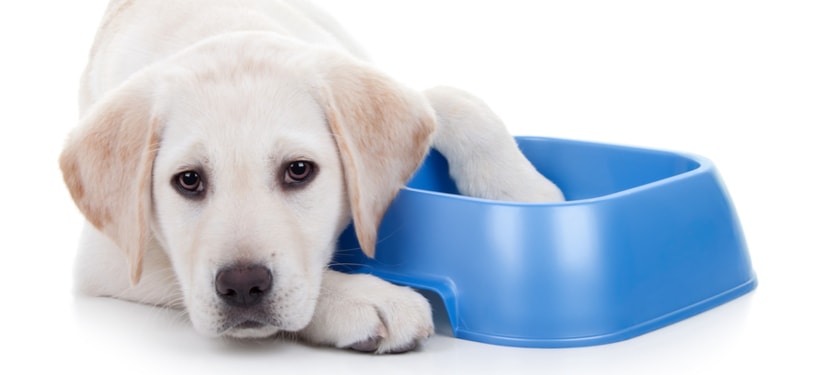Wet Food vs. Dry Food: What to Feed What Breed

Contents
Most of us dog owners do not have the luxury of time to give our pooch a homemade, personalized meal that can give them the nutrients they need without the added preservatives. Thus, it is not a surprise that most would turn to processed dog food available on the market today.
But with so many choices concerning brand, variant, and texture, it can be difficult to tell which could be compatible with your dog’s health, not to mention the fact that it must be within your budget as well.
Some owners boil down the options into two: canned dog food or dry kibble. Which would be the best for their dog, including yours? Below are three criteria that can help you decide what texture suits your pet.
Quality and nutrition
Wet
Canned dog food is usually put inside the containers in fresh quality, and manufacturers rely on classic canning preservation method as a way to make the wet food last longer. This means fewer preservatives in the formula, and owners can be assured that the nutrients are kept intact.
The nutrition label in the canned versions can indicate that it contains more fat and protein than kibble making it calorie-dense. This is because fat can make the food more flavorful and palatable. Thus, if not appropriately portioned, your dog might end up overweight.
This variant is perfect for dogs who have weight management problems and for toy breeds like Yorkies and mini-poodles–even a small portion can give them the feeling of fullness. It is also recommended for those who do not prefer drinking water (although you must train your dog to drink water as much as he could).
Dry
Regarding its food quality, dog owners may not be sure if a particular brand of dry dog food is a good one because each formula is packed in bite-sized pieces of unknown combinations. Your only indication for the formula’s quality is the ingredients list. Look for meat-based products on the first three items listed (preferably on the beginning). If you cannot find one, bring it back on the shelf.
As for nutrition, the kibble may not be as calorie- and nutrient-dense as the canned because most manufacturers resort to carbohydrate-rich products to up the calories. To ensure that the dog food you will buy can provide the nutrients your pet needs, check the “Guaranteed Analysis” part of the nutrition label and see if the protein and fat can contain at least 25% and 15% of their daily requirement, respectively.
Flavor and Texture
Wet
Dogs use their sense of smell first before the taste when it comes to assessing their food source. Thus, it is vital that the dog food given to them can entice them primarily through its scent. Canned dog food provides that satisfaction.
In the same manner that humans salivate profusely by the smell of the food, dogs find it stimulating to have a wonderful-smelling meal. Another advantage of the canned variety is that it has a softer, more teeth- and gum-friendly than the kibble. Because it is easy to swallow, it is not a wonder that when given wet food, dogs jump on it with as much enthusiasm as playing fetch. Perfect for older dogs that have dental and jaw problems.
Dry
Because of its crunchy, chewy texture, it might take some time for dogs to enjoy a full portion of kibble. Depending on the ingredients, some dry dog food may have the same flavor as that of the meat added. If the latter is inserted in meal form, its savory flavor becomes more concentrated in each bite.
This texture is highly encouraged for puppies who are yet to master the act of chewing and those who need to strengthen their teeth and gums. Adult dogs may benefit from the additional activity of chomping on their food before swallowing it.
Cost and Convenience
Wet
Because the ingredients in one canned formula are more concentrated than kibble, it may cost you more if you make it as the lone food source of your pet, primarily if he or she belongs to the large breed, like Labradors and Great Danes. Add the waste products and the ample storage space it might eat at your kitchen cupboard, and you might find a canned dog food impractical to maintain in the long run.
Aside from that, wet food cannot be kept on your dog’s food bowl for more than an hour because it can quickly get spoiled. In case of an unfinished meal, you must immediately put the leftovers in the fridge and heat it up again before serving.
Dry
On the other hand, kibble is more budget- and storage-friendly. Because it is manufactured in small pieces, you can put it in any container and store it in one place where your dog can’t reach it. It also takes longer for it to become stale–in fact, most owners leave the extra kibble in their food bowl instead of throwing it out. This practice is common for people and families who go out to work in the morning and only see their dogs when they get home in the afternoon or evening.
Which one is better?
Although I probably made it look like the bias is on canned food, it is still up to the dog as to what suits him or her best. After all, it is him who would consume the food, not you.
However, you still have a part in the decision-making process because you are the one who pays for his meal. Because some dog owners could not afford the canned one, they opt to mix both wet and dry food every meal for their dogs to enjoy. Others use the canned version more as a treat during training and on special occasions. You must also consider the health and medical conditions of your pet when it comes to choosing the texture of his meal.
In the end, all we want as dog owners are to give what is best for our pet. In choosing what to feed him, always consider which would provide the most number of benefits.
